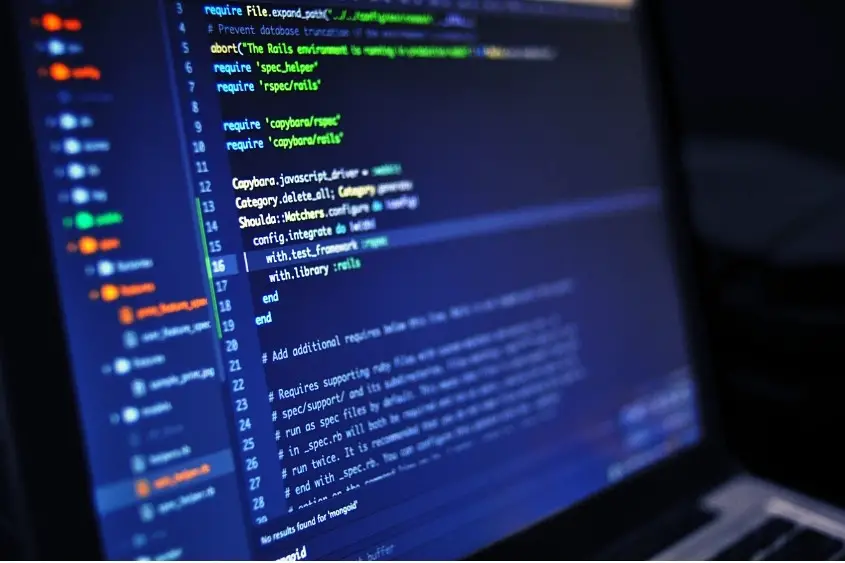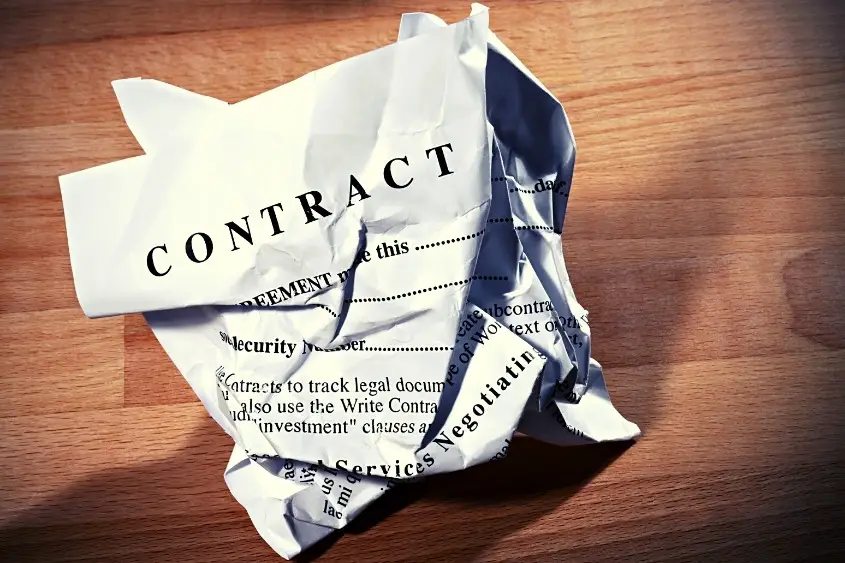The term NFT smart contract might sound foreign if you’re just learning about NFTs. Considering how important they are to the functionality of non-fungible tokens, it’s crucial that you know what it is, how it works, and how to create your own. So, what is an NFT smart contract?
Table of Contents
What Is an NFT Smart Contract?
An NFT smart contract is a self-executing mechanism that implements sale agreements between the owner and buyer. A smart contract also verifies whether the contract terms have been satisfied and can execute these terms without the need for an intermediary or central authority.
These contracts are simply a set of promises in digital form. For example, if the smart contract determines that X is true, then Y will be done.
When an NFT is minted (published) on the blockchain, the smart contract automatically assigns ownership of the digital token to the purchaser. And if the owner decides to sell it at some point, the smart contract automatically transfers the ownership of the asset to the new owner once the condition has been met.
Hence, the smart contract verifies that the buyer has sent the seller the requested amount of money before executing the transfer. And this all occurs without the need for an intermediary.
Smart contracts exist within the blockchain (a public ledger) allowing anyone to view the contract terms in addition to the time and date of when the contract was deployed.
They are capable of various functionalities including linking to other digital assets, handling royalty payments, and enabling access to certain token-gated events and experiences.
Also, the smart contract can ensure that the digital assets remain one-of-a-kind and are non-replicable. This makes certain NFTs scarce and rare, which is one reason why they have value.
At the very core of smart contracts are a series of if/then and when statements that are written as code into the blockchain. These are run by a network of computers that executes all the agreed-upon actions coded in the smart contract. Each action is executed only if the predetermined conditions are met and verified.
How Are NFT Smart Contracts Created?
Developers deploy NFT smart contracts onto the blockchain through a process called minting. This code describes how a token will function and which agreements need to be met in order to execute their specified tasks. This smart contract code also decides the qualities of an NFT.
There are many standards that have been established for blockchain-based contracts. Ethereum is one of the very first to use these standards.

Smart contract development standards
Since Ethereum is the most used NFT blockchain, we will look at its standards specifically. The prominent standards of Ethereum include ERC-1155 and ERC-721.
- ERC-721 Standard
ERC 721 is a data standard for creating an NFT on Ethereum and is what makes it unique, as these tokens created using this standard can’t be divided or directly exchanged for another ERC 721 token. Essentially, it enables creators to deploy unique crypto assets via its contract.
- ERC-1155 Standard
ERC 1155 is a standard for creating semi-fungible tokens by allowing developers to deploy both fungible and non-fungible tokens within one contract.
Both of these standards enable developers to consistently create, improve, and deploy crypto assets on the Ethereum blockchain.
Before developers permanently add contracts to the blockchain network, they will test it using the Goerli testnet. This testnet enables devs to test various applications before officially launching them on the main network.
That being said, other NFT-capable blockchains like Solana, Cardano, and Tezos all have their own versions of these standards to assist in standardizing smart contract development across various blockchain networks.
What Does a Smart Contract Cover?
The NFT contract outlines what rights are being specifically given to the buyer. The contract identifies the token as separate from the art. The art could be an image, music, or sound file. The contract provides clarity on the rights being transferred.

Having ownership does not mean that the person who buys a digital asset owns the copyright. The copyright will stay with the creator in most cases unless explicitly outlined in the contract.
In most cases, the license would allow the buyer permission to display the art along with the commercial license that would allow them to create merchandise that incorporates the art. But these terms could be different for each transaction and will have to be specifically coded into the smart contract.
How Do Smart Contracts Verify Authenticity?
Smart contracts authenticate the token itself and its ownership. They can also trace the unique history of the token on how they were developed and linked to creative work. This data is available on public blockchains. You can verify the wallet address and its linked metadata from the blockchains.
For example, all NFT marketplaces, such as Opensea, display this information for buyers to see before they decide to make a purchase. This enables you to easily and quickly verify the authenticity of an asset before spending your hard-earned money.
Do Smart Contracts Prevent Counterfeits?
An NFT smart contract prevents counterfeit assets by transparently communicating a token’s creator, its date of creation, and the token’s id. So, although there are NFT look-alikes, the metadata and contract work together to expose any fakes.
Every NFT has a unique token id, which has the information and details of the smart contract. This info is then registered on the blockchain and displayed publicly so that anyone can view the record of creation, purchase, and proof of ownership.
Hence, if the image is reproduced the blockchain will prove the ownership, and the reproduced images or assets are deemed worthless.
Additionally, the transfer of any NFT is authorized on the blockchain by the holder of the NFT using a crypto wallet, like Metamask.
Examples of NFTs Smart Contracts
An NFT and its smart contract work together and enable creators to provide value to their token holders. That said, there are many use cases for a smart contract beyond the purchase and transfer of digital assets on the blockchain.
Access to token-gated experiences
One of the earliest examples of NFTs and smart contract utility is enabling holders access to token-gated experiences. Basically, NFTs can act as tickets to both physical and virtual events.
VeeFriends is a great example of a digital asset that grants holders IRL access. The smart contract of every VeeFriends token states that each holder will receive one NFT ticket each year (from 2022-2024) which grants them access to a super conference called VeeCon.
This ticket is automatically airdropped to holders each year, granting them access to the event. Without one of these tickets, it’s impossible to gain access to the conference.

Physical and digital merchandise claims
Another NFT smart contract example is its ability to allow creators to offer their holders unique gifts. By creating a token-gated checkout system, holders of certain tokens are able to claim free merchandise by connecting their digital wallet to a website.
Again, VeeFriends has executed this well. Various tokens have enabled specific holders to claim free clothing, wine, and other exclusive products that they would otherwise have to pay for. And in some cases, the products were even never offered to the general public—making them exclusive to token holders.
Physical products aren’t the only advantage of owning this particular NFT. For example, all VeeFriends holders were able to claim free NFTs ‘Series 2’ tokens just for holding the originals.
At the core of all this is a smart contract NFT that states what the holder is able to claim depending on the exact token they hold.
The benefit of a smart contract is that it is useful in business transactions where a specific agreement has to be enforced. This removes any uncertainty about the outcome and intermediaries can be avoided completely.
Voting rights
Voting rights are an interesting utility of NFT contracts. Although these rights haven’t been implemented on a large scale (such as for the Presidential elections), they have been used in other settings.
Decentralized autonomous organizations (DAOs) are one example that comes to mind. These organizations have no central authority. Rather, the token holders are the authority that votes on the behalf of the organization.
Many NFT-based brands have created DAOs to allow token-holders to vote on the next steps for the brand. This is the ultimate form of a community-driven NFT project.
With that, the number of tokens you hold ultimately determines how heavy your vote weighs. So, if you own multiple tokens, then you get multiple votes. Again, this is all regulated by a digital contract so that no one can ‘game’ the system.
Execution of a real estate contract
Thinking in literal terms, a smart contract can also be used in industries where ‘normal’ contracts play a large role. Real estate is a good example.
There are many steps involved in buying a house. With that comes potential delays at each step. To obtain financing from a bank for the house you are asked to fill out various forms, provide personal information, and have credit checks done. You know, all the fun stuff involved with attaining a loan.
Multiple people are usually involved in the process resulting in commissions and other fees at each step, adding to the overall cost of your purchase.
A smart contract can streamline this process by reducing delays and fees simply by removing the need for intermediaries. Instead, the contract could initiate the transaction between the bank, the seller, and you.
Essentially, the repayment is initiated while the title is held by the bank till the terms of the repayment are fulfilled. Once done, the transfer of ownership would be automatically executed and the transaction is recorded on the blockchain for anyone to see.
Here are some examples of how smart contracts can improve standard contracts.
- They bring in speed and accuracy as paperwork can be avoided completely
- They provide trust as no one can change the terms once it’s deployed
- They are highly secure and hard to hack
- There are a lot of savings as intermediaries are eliminated
A real-world example of this type of contract in action is the Bacon Protocol. Bacon is a decentralized mortgage lending protocol created using smart contract technology.
How to Create an NFT Smart Contract
You can easily create your own NFT smart contract using a no-code platform like Manifold. Also, you can utilize contracts that are available when creating an NFT on a marketplace like Opensea. Otherwise, you can hire a developer to create a custom smart contract for you.
If you have no interest in the actual creation process of minting NFTs, then investing in a developer to make your smart contract for you is likely your best option.
On the flip side, if you want to create your own smart contract but you have minimal technical skills, using a no-code smart contract service like Manifold is a great choice.
Frequently Asked Questions
What is an NFT smart contract?
An NFT smart contract is a program that enables creators to manage various aspects of a blockchain token. This includes royalties, ownership, metadata, and additional utility.
Is an NFT just a smart contract?
An NFT is made up of a smart contract and other media files. Nonetheless, the smart contract determines how an NFT is managed on the blockchain.
Are NFT smart contracts safe?
Not all NFT smart contracts are safe. Some contracts can include programming that enables the NFT creator access to your wallet. This is known as a malicious NFT.
How much does an NFT smart contract cost?
You can create your own custom NFT smart contract using a no-code platform like Manifold for $50 to $200.

42 thoughts on “What Is An NFT Smart Contract? A Complete Beginner’s Guide”
Comments are closed.